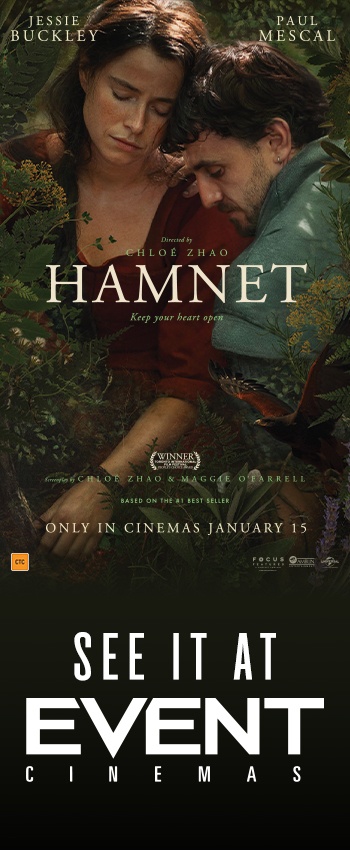French fashion designer Yves Saint Laurent died in 2008 aged 71. Now, six years later, YSL fans and cinephiles are blessed with not one, but two films celebrating the man Wikipedia describes as one of the greatest names in fashion history. First cab off the rank is YVES SAINT LAURENT directed by Jalil Lespert. The second film, more tersely entitled SAINT LAURENT is due for release in October and is directed by Bertrand Bonello. There is still time for the Bonello version to gain an eye-catching OLIVER!-style exclamation mark to make it stand out from its rival.
Lespert’s movie begins with Saint Laurent (Niney) already something of a star in the French fashion world. We see him visiting his parents in their home in Oran, French Algeria. Saint Laurent, whom I will refer to henceforth as “Yves” for brevity, is from a wealthy family and is adored by his mother. He has a quiet and deferential manner and had at one time considered the seminary in order to become a priest. Now, despite his young age, he is working for Christian Dior. His designs are well regarded by his mentor.
Yves’s story is to some extent narrated by his one-time life partner Pierre Bergé (Gallienne). The real Bergé was co-founder of the Yves Saint Laurent Couture House and Yves’s long time business partner. He has given Lespert’s production his blessing by opening up the YSL archives for reference purposes and loaning of couture items. This gives the movie a certain level of historical authority that will please fans of YSL fashion. Fictional Bergé’s memories give some shape and a timeline to the movie which otherwise has the usual pitfalls of the biopic–pacing and episodicity (which sounds like a made up word but isn’t).
Saint Laurent was a shortening of the family’s surname. When Yves started using this more compact handle he was branding himself in the modern sense of that term. The film shows Yves’s identity shifting bit-by-bit, year-by-year. He is dealing with the public perceptions of being an icon and his own perceptions of what it means to be an artist with a rock star profile. Sometimes his changes were conscious, sometimes less so. Yves is named Dior’s head designer in 1957 at the age of 21 after the death of Christian Dior. From this point onward, the pressure on Yves is enormous. He becomes a news story. His designs are scrutinised and commented upon as part of a national conversation. What he does is part of the culture and has a status akin to art. This way of seeing fashion is not the norm amongst we Anglophonic types, I believe we tend to view it as trivial and disposable. Committing to this film requires one to appreciate Yves Saint Laurent’s status as a French national treasure and a creative genius.
Many of the movie’s livelier scenes occur in the first half. Another truism of the biopic is that the road on the way up tends to be more engaging than the plateau of success or even the road down. Young Yves is capable of fixing a troublesome design with a few deft pencil lines. It’s the equivalent of the movie version of Glen Miller writing Moonlight Serenade. Geniuses do what they do. Yves is less brilliant at living his life outside the atelier. He is mentally and emotionally fragile and relies heavily on his lover Bergé. He is by his side as Yves struggles to create his own fashion house. The story moves forward. These scenes of Yves engaged in his work and amazing the world is the pulse of the picture. If you buy into it, then Lespert has recreated the dazzling ambience of early 1960s French couture. Fashion was an international business even then, before it became enmeshed with celebrity and excess in the 1970s.
By the time the movie is in its jet-set-me-generation-sex-drugs-and-more-sex phase, then it becomes a little less engaging. As Bergé observes, Yves is no longer the seminarian of his younger days. He becomes distracted by his celebrity and all the trappings of success. For those who crave portrayals of indulgence and moral laxity in the spotlight of the media, there is much to enjoy here. There are also moments when things get a little risible. The groundbreaking 1971 Liberation collection is presented in a short sequence reminiscent of the high-tone sex scene in EYES WIDE SHUT (1999). Remember your password–fidelio .
The performances of the leads are excellent. Niney’s Yves is an enigmatic, delicate character who is self-involved to a fault but who has moments of clarity and self-knowledge. Gallienne anchors the film, much as the Bergé character anchors Yves. His is a solid presence and he presents a fully rounded character. Bergé is is not always admirable, but his love for Yves is where he is at his best. Canadian actress Charlotte Le Bon plays model Victoire Doutreleau. She is Yves’s first muse. Their relationship was reported to have a “platonic perfection”. The film makes her the quasi third side to a triangle with Yves and Bergé. Le Bon who has been a model herself, does a lovely job playing a woman who misunderstands power and suffers as a result.
Yves Saint Laurent is in limited release in Australia. It runs for 105 minutes. I rate it a 6/10.




